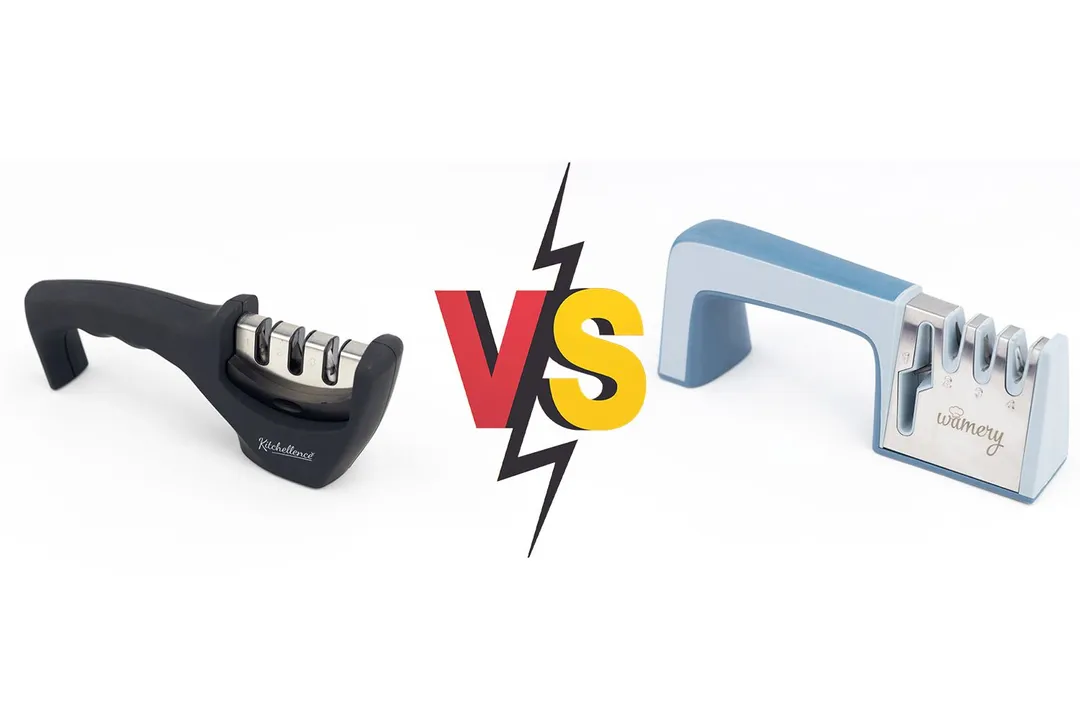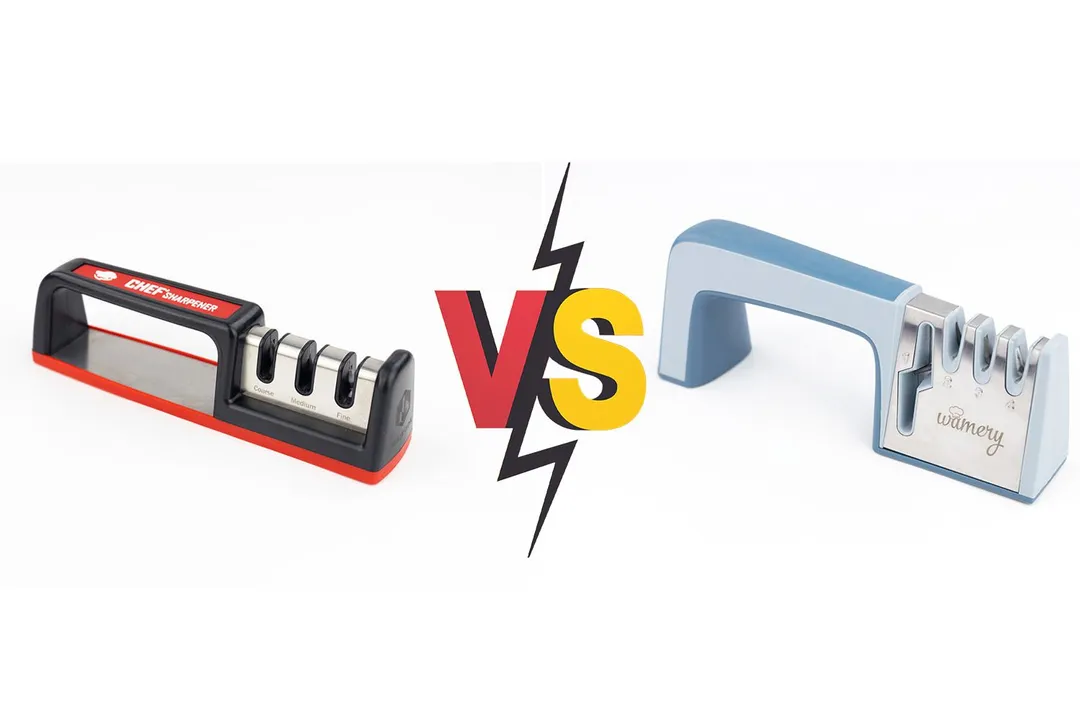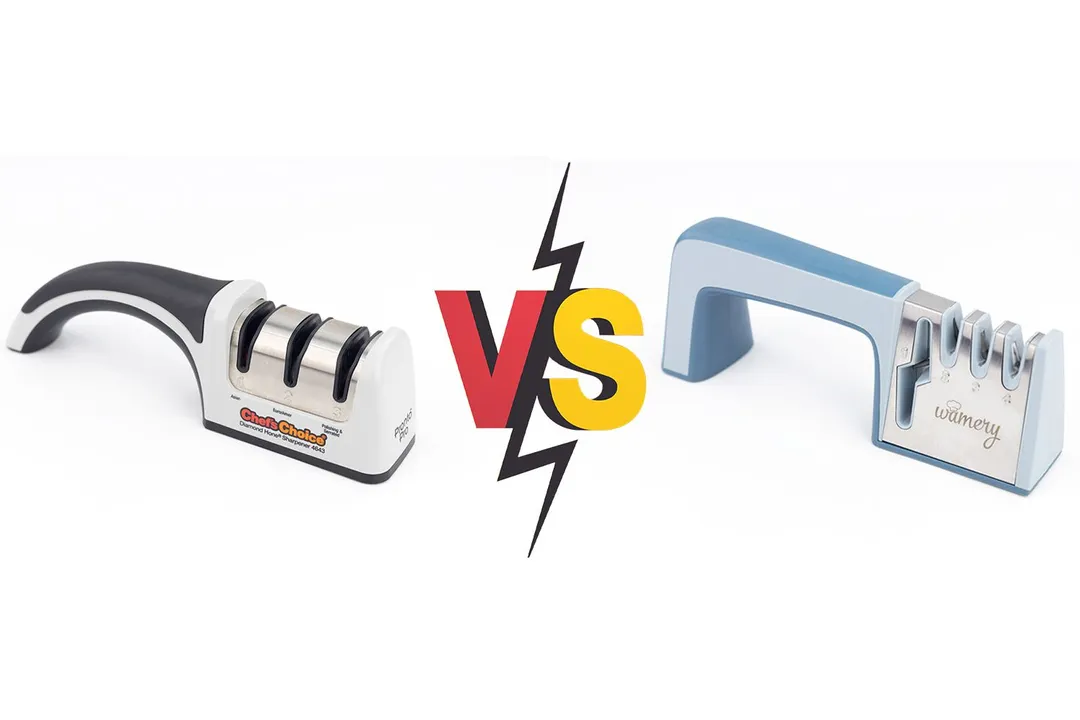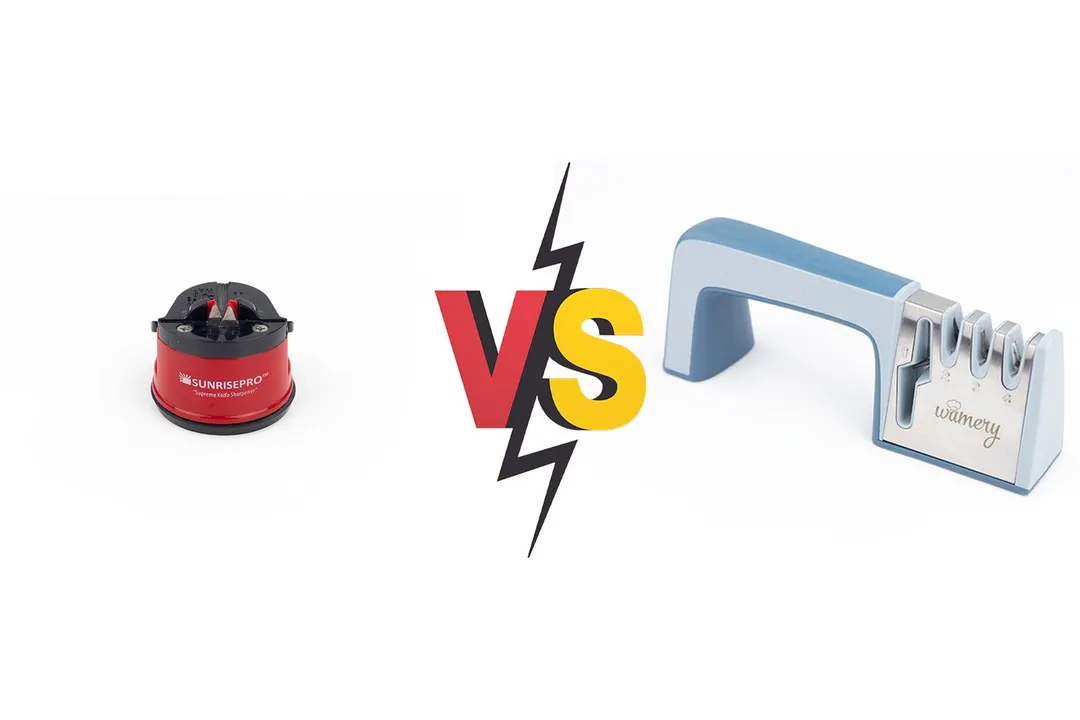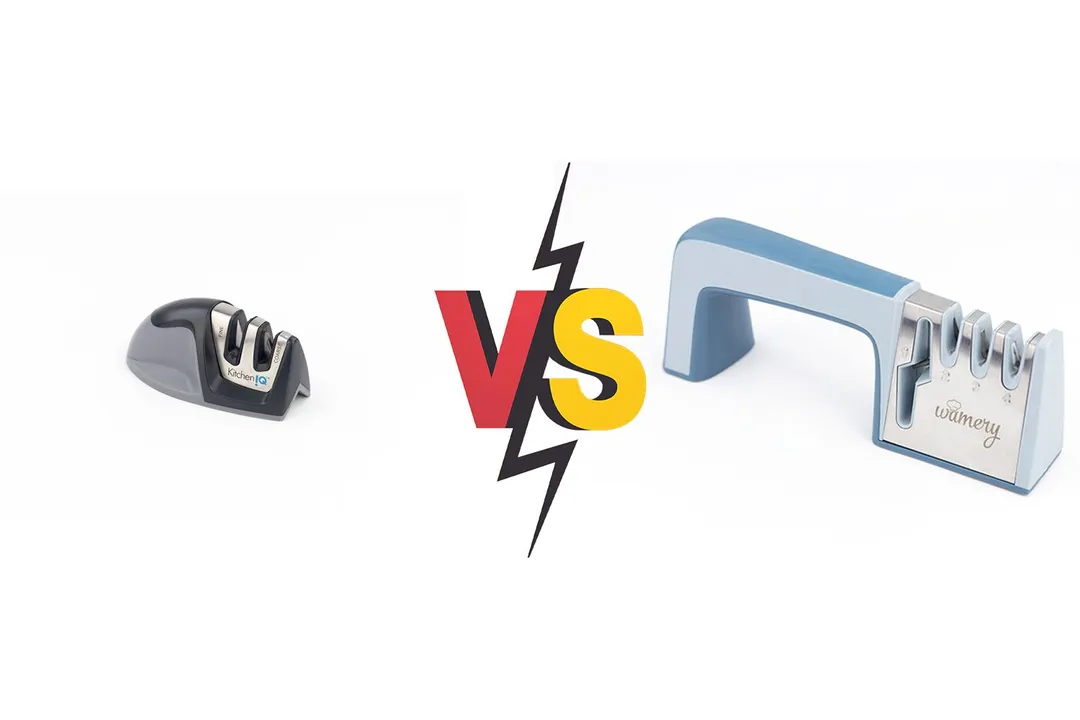Our recommendations are made independently through Research & Testing. We may receive commissions from purchases made via our links.
Smith's 50264 Manual vs Wamery 4-Stage Manual Side-by-Side Comparison
The Smith’s 50264 has its advantages but ends up with a lower rating than the Wamery 4-stage sharpener in our tests. Read on for details.
Smith's Adjustable
Tested Using Methodology v1.1Wamery 4-Stage
Tested Using Methodology v1.1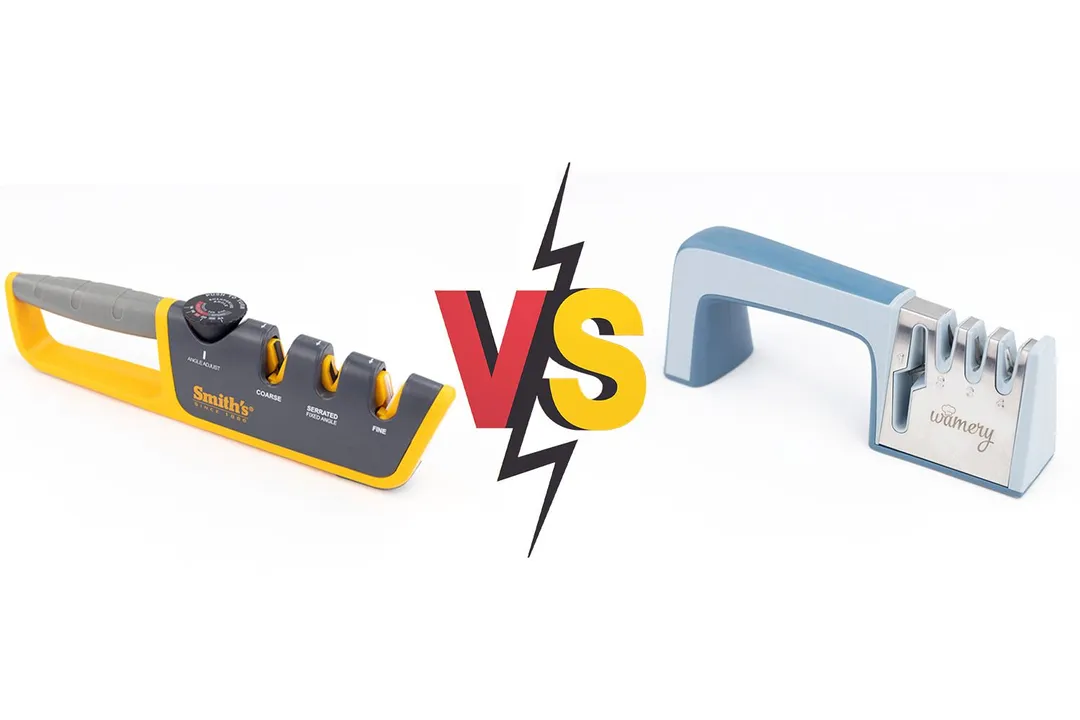
Overall Verdict
The Smith’s 50264 is the more flexible sharpener, its grind angle being adjustable to accommodate more types of knives. It’s consistently fast and could bring the knife to one sharpness level higher than the Wamery could. Its Achilles’ heel lies in edge integrity: The Smith’s not only eats away the blade, but it leaves a wavy edge too. The thin body also causes shaking and tipping during use.
As far as edge retention and polishing go, the Wamery 4-stage sharpener is clearly a step ahead. It’s also faster, though not by leaps and bounds. And, although of the same height, the Wamery’s wider base keeps it better-balanced and more stable than the Smith’s. Its extra slot for scissors is also a nice feature.
All things considered, the Wamery is the better pick between the two.
Pros & Cons
- Angle-adjustable sharpening
- Sharpening slot for serrated blades included
- Wide slot inserts
- Replaceable abrasives (sold separately)
- Extra sharpening slot for scissors
- Intuitive slot order
- Wide base
- Shears off a considerable amount of metal
- Awkward slot structure
- Long, narrow base
- Shabby build
- Excessive height, high center of gravity
Key Specs
Where to Buy
*You help support HealthyKitchen101's product testing and reviews by purchasing from our retail partners.
Analysis and Test Results
Performance
Sharpening Time to Cut a Lemon
Material Retention
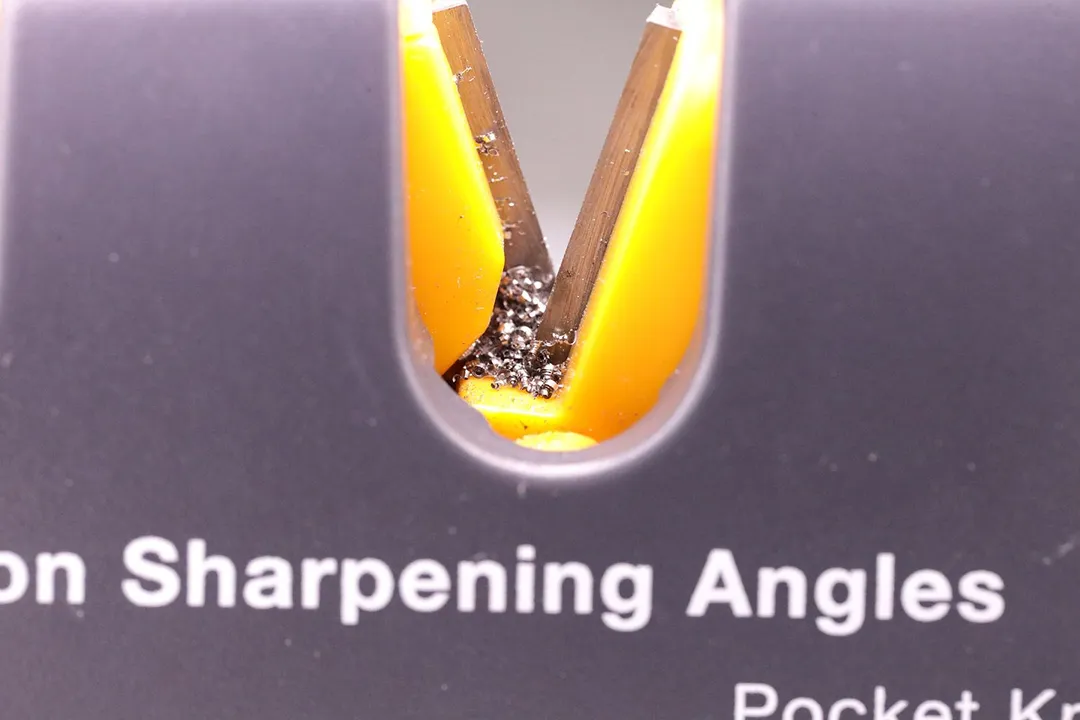

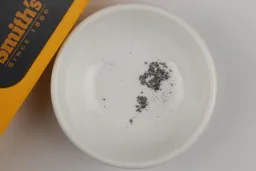
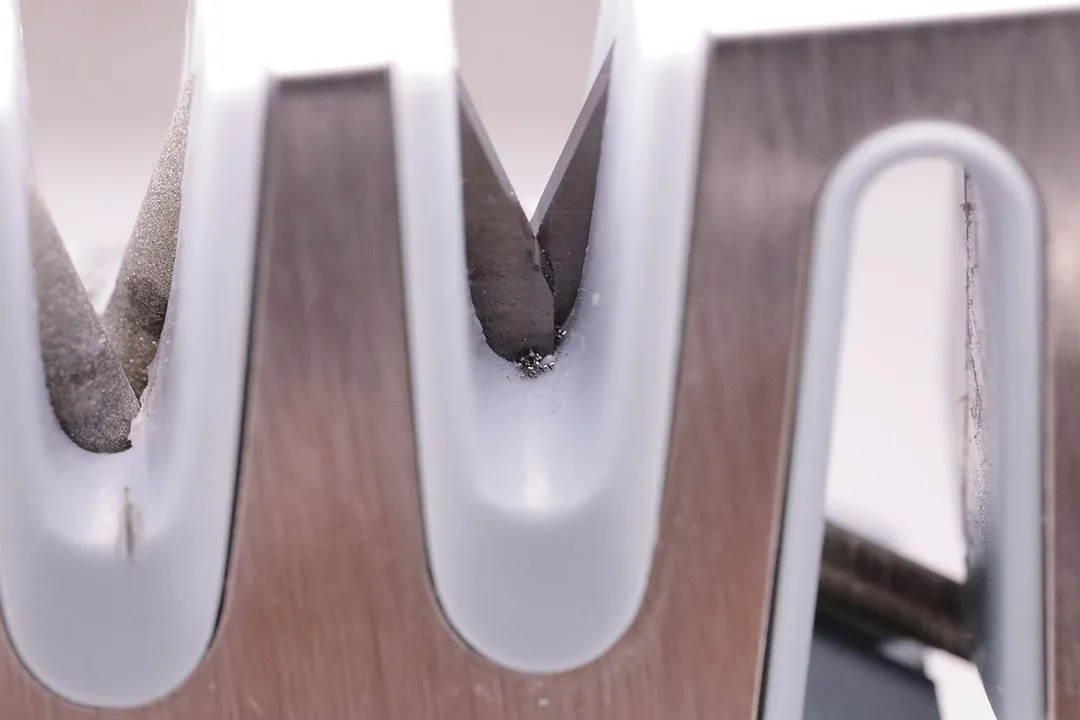
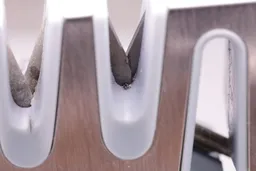

Maximum Sharpness Achieved
Edge Smoothness

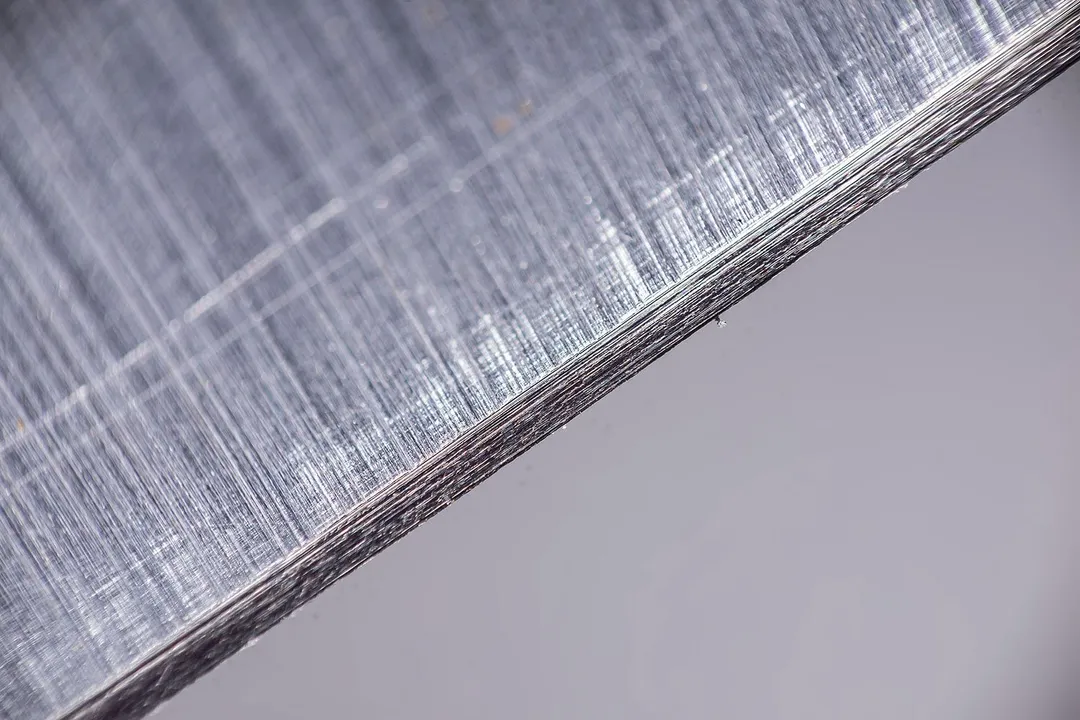
Design
In the Box
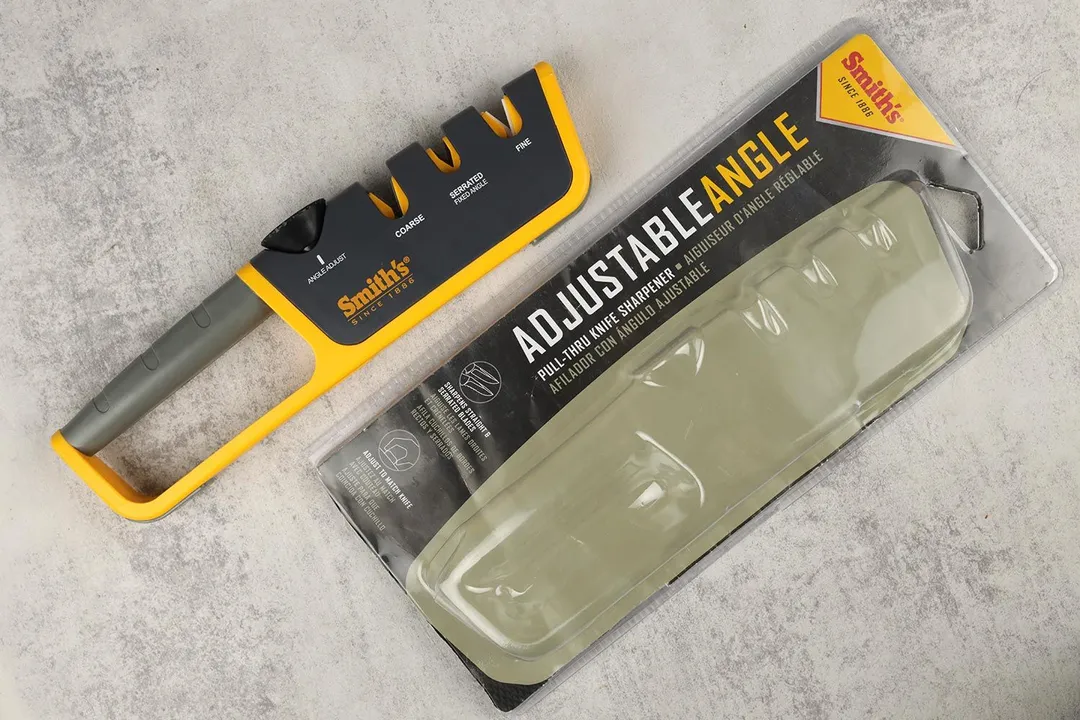

Dimensions
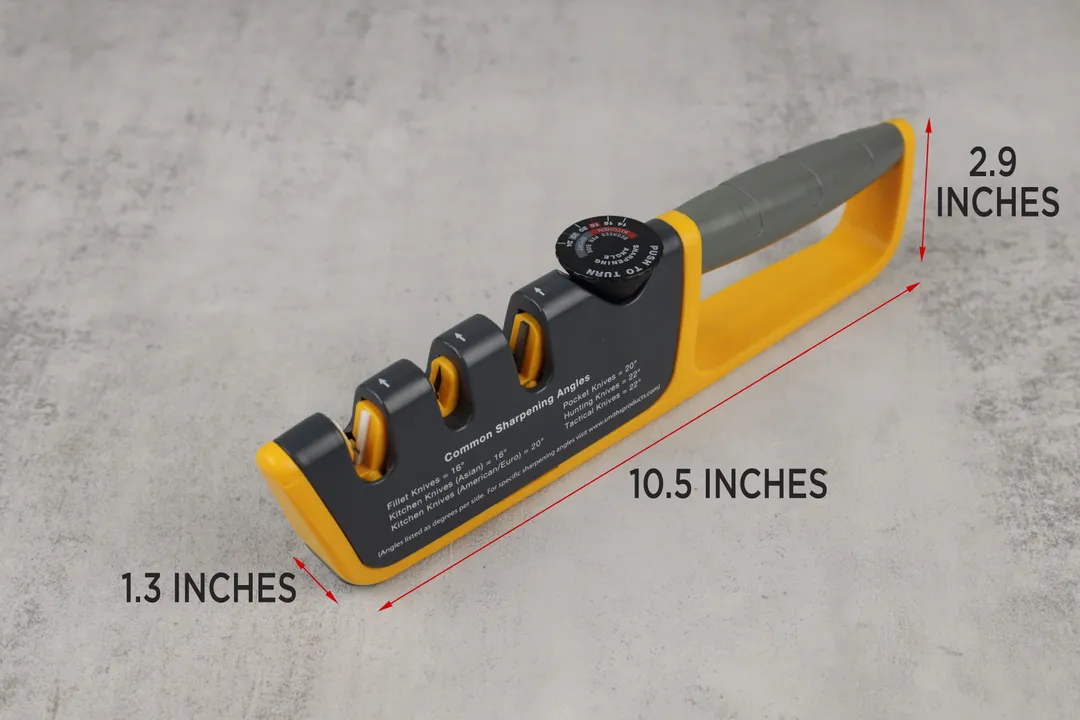
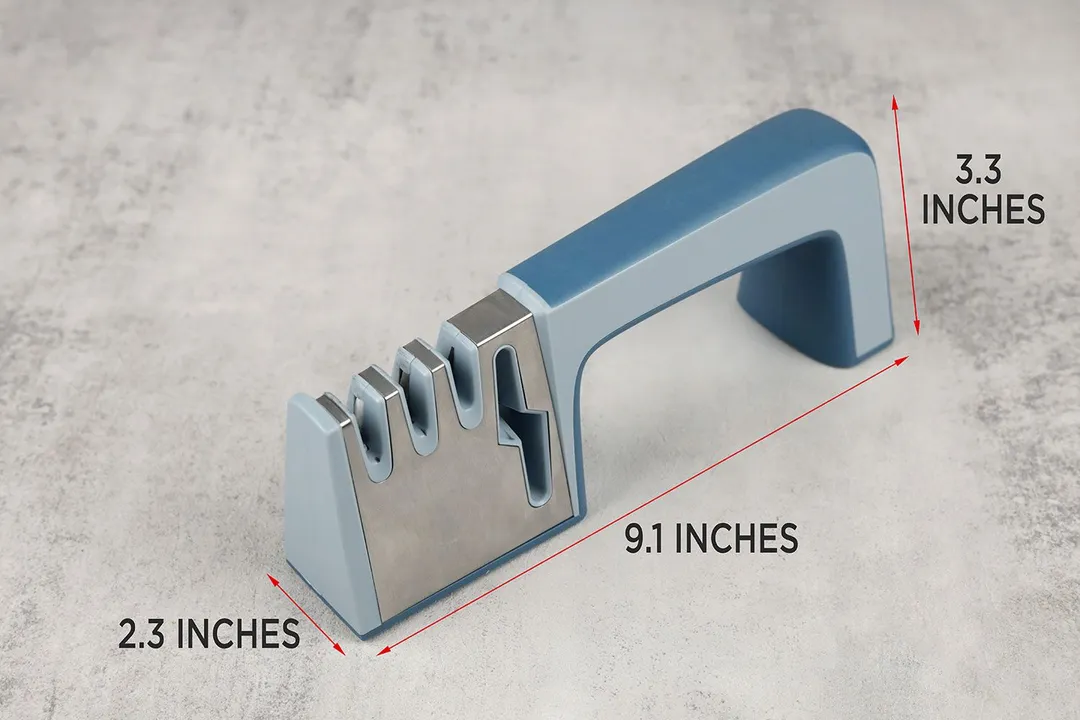
Build Quality
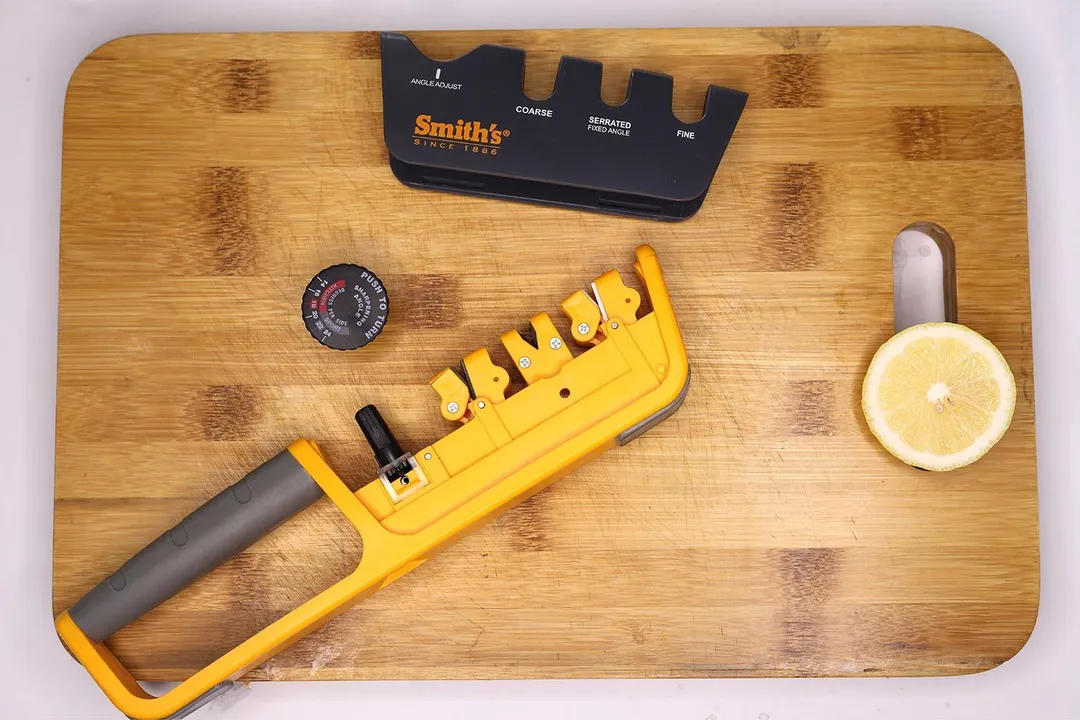
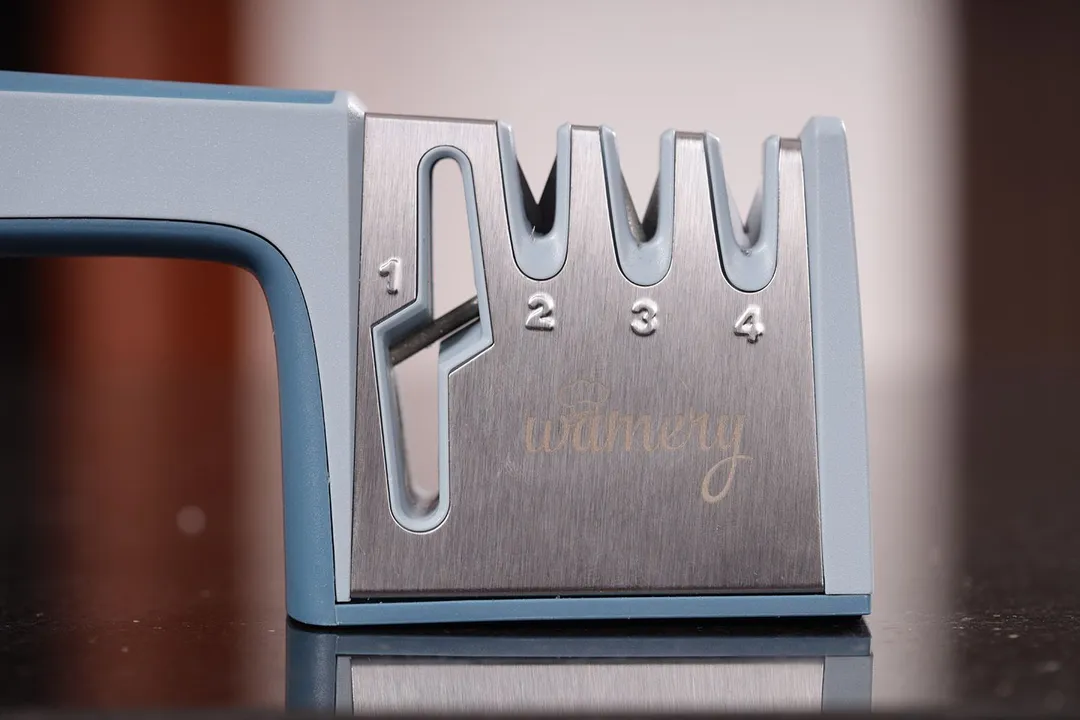
Working Section
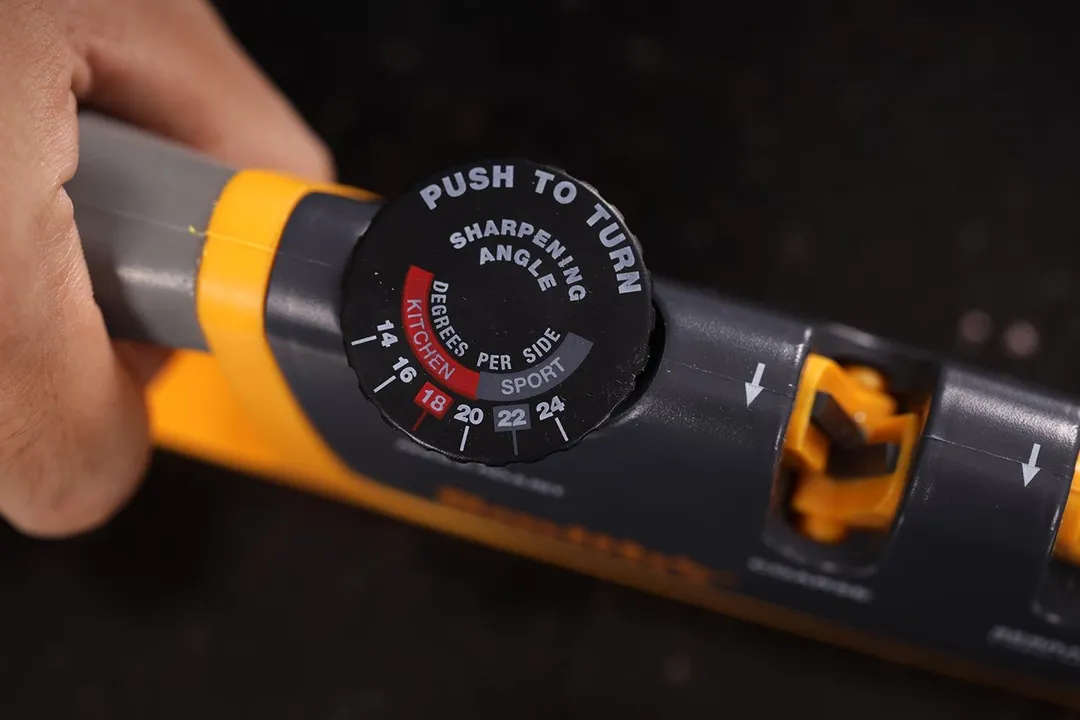
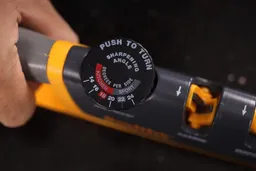

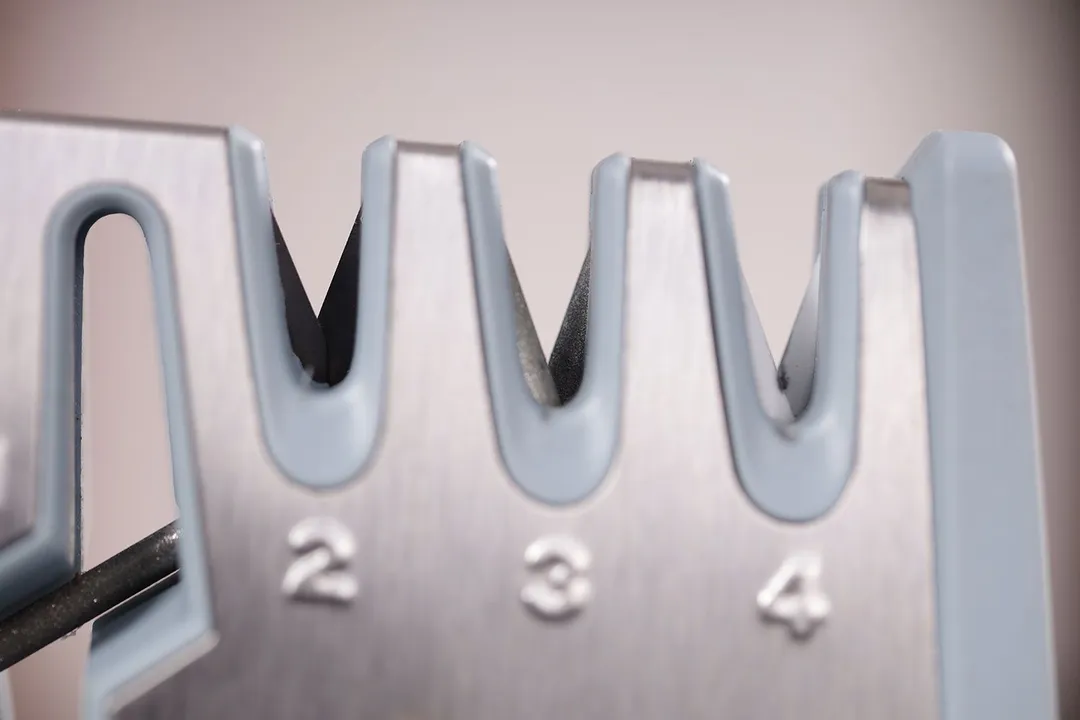
Base
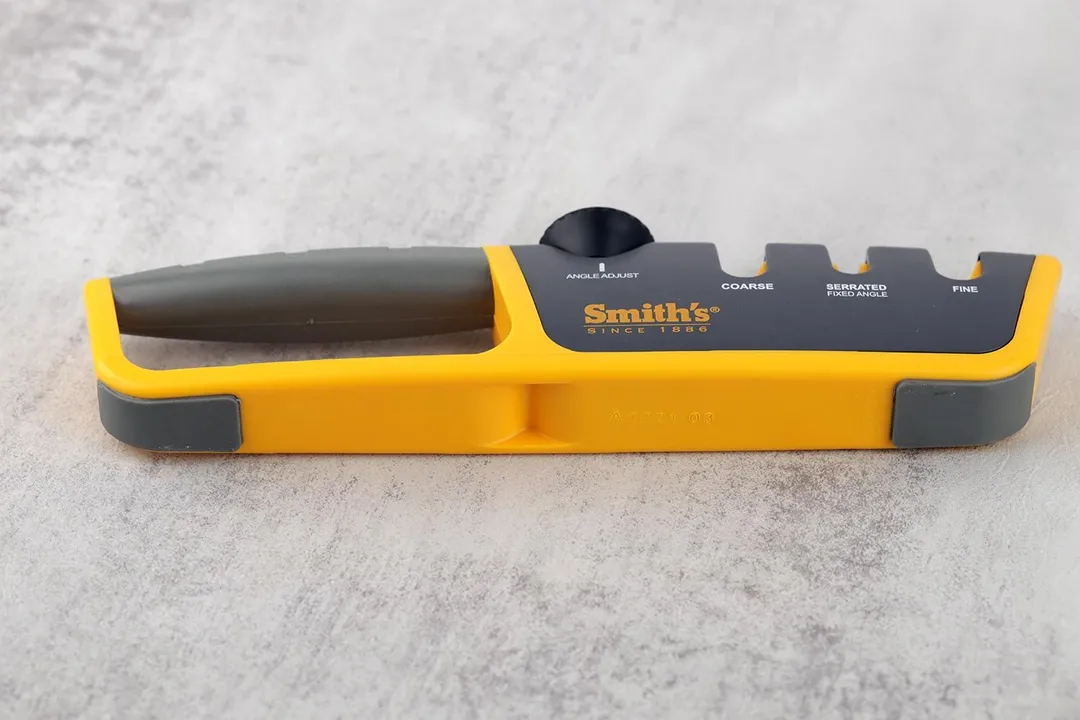
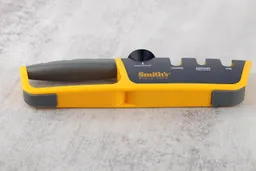
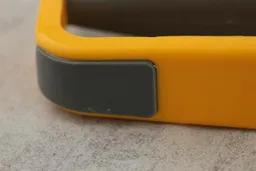
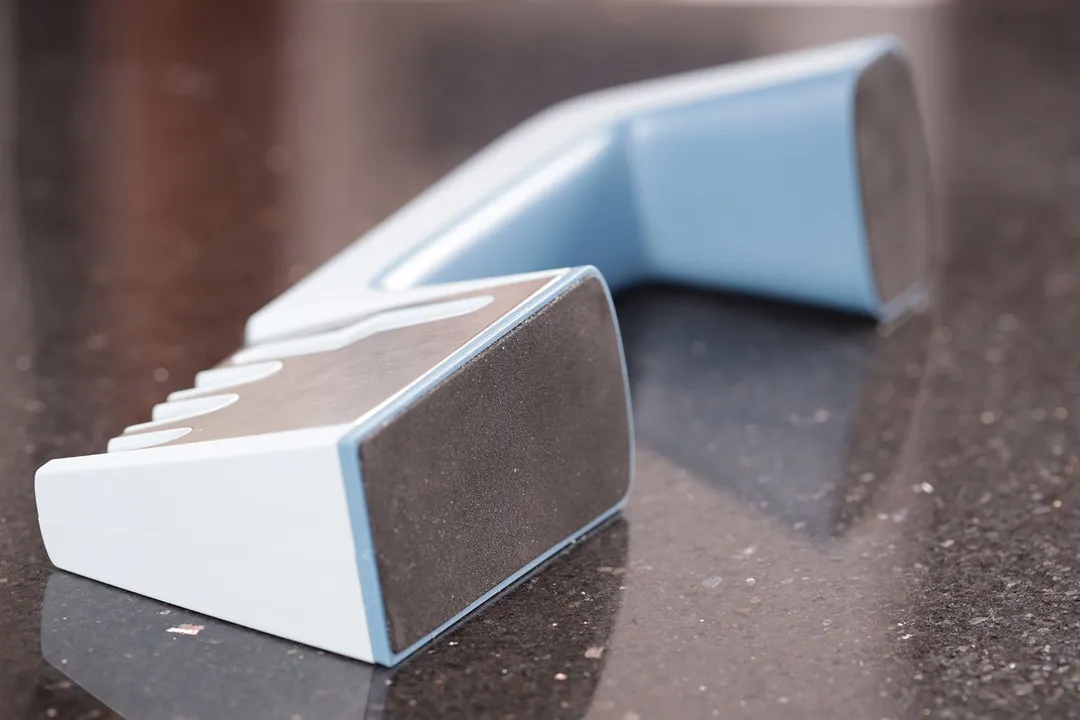
Grip
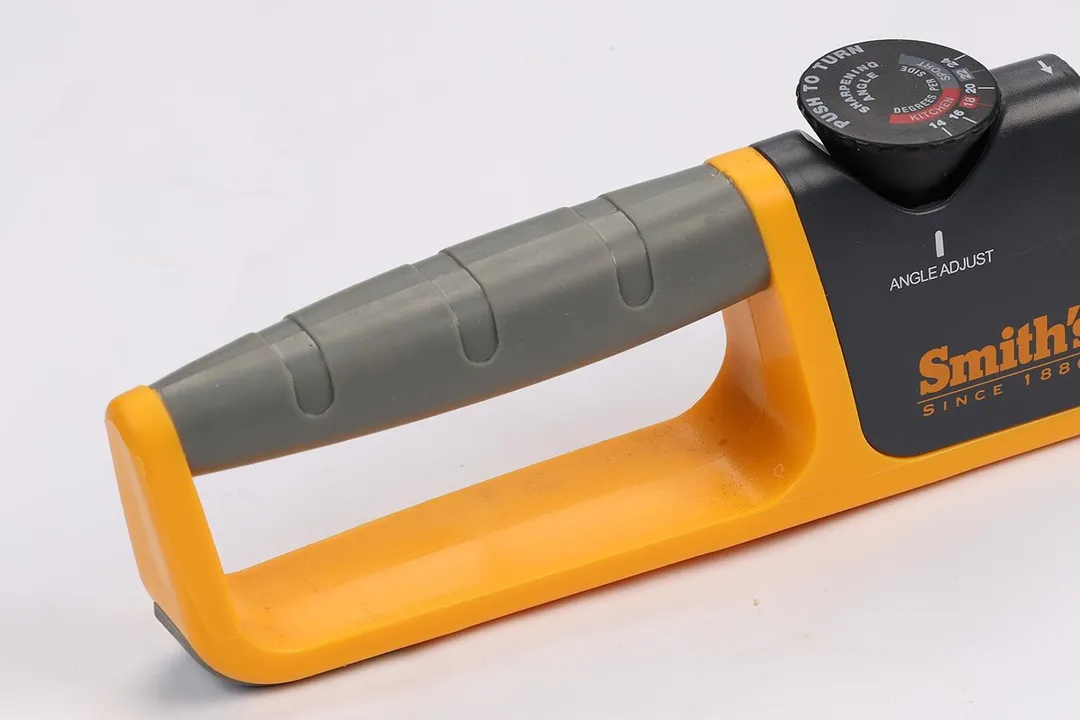
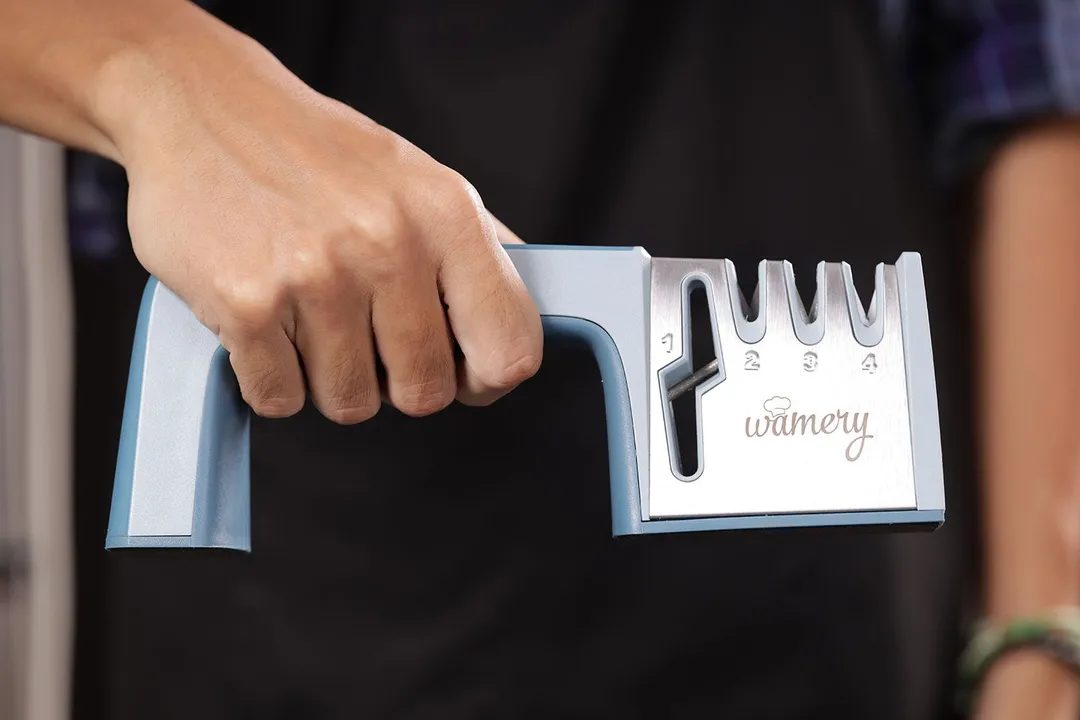
Usability
Slot Arrangement
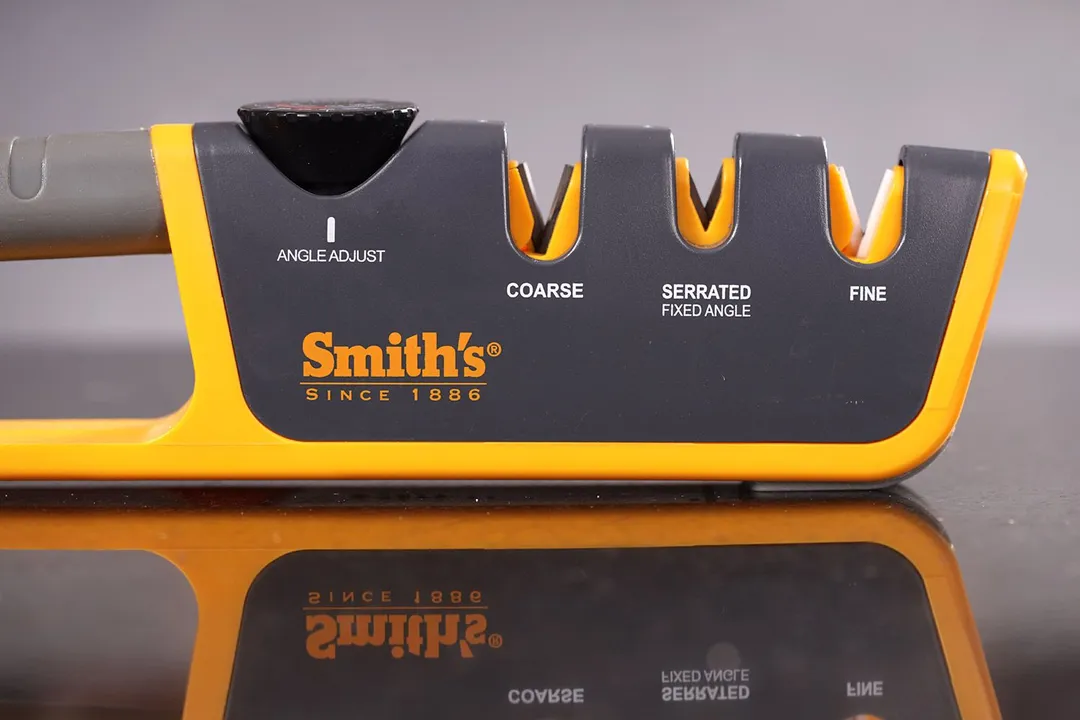
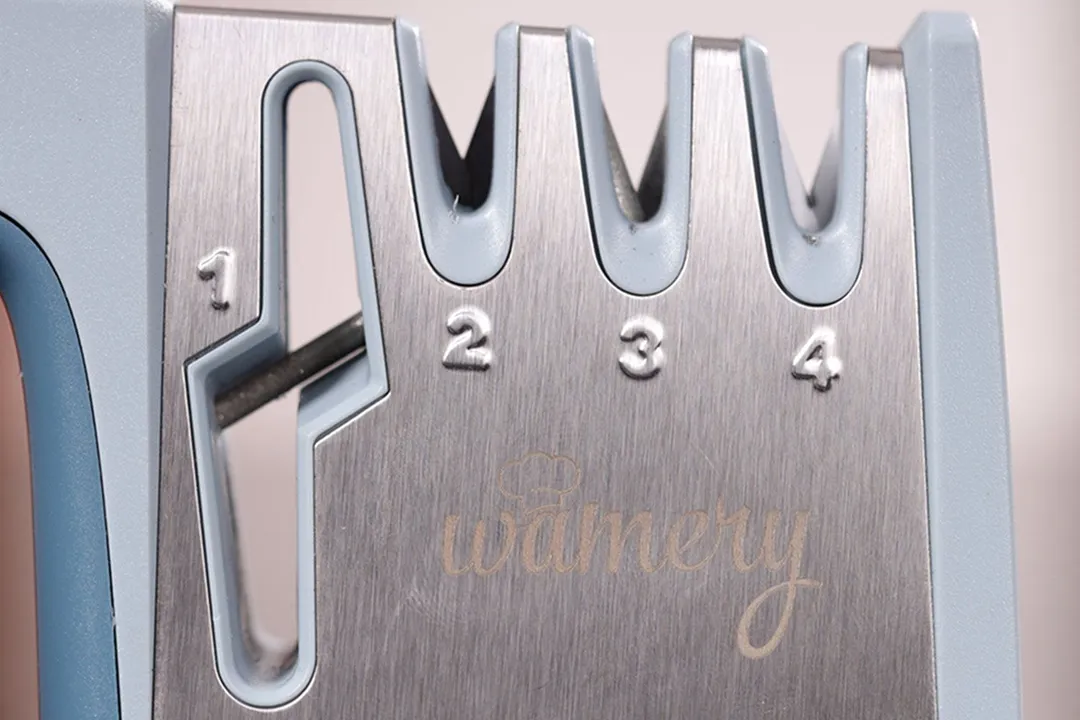
Insertion
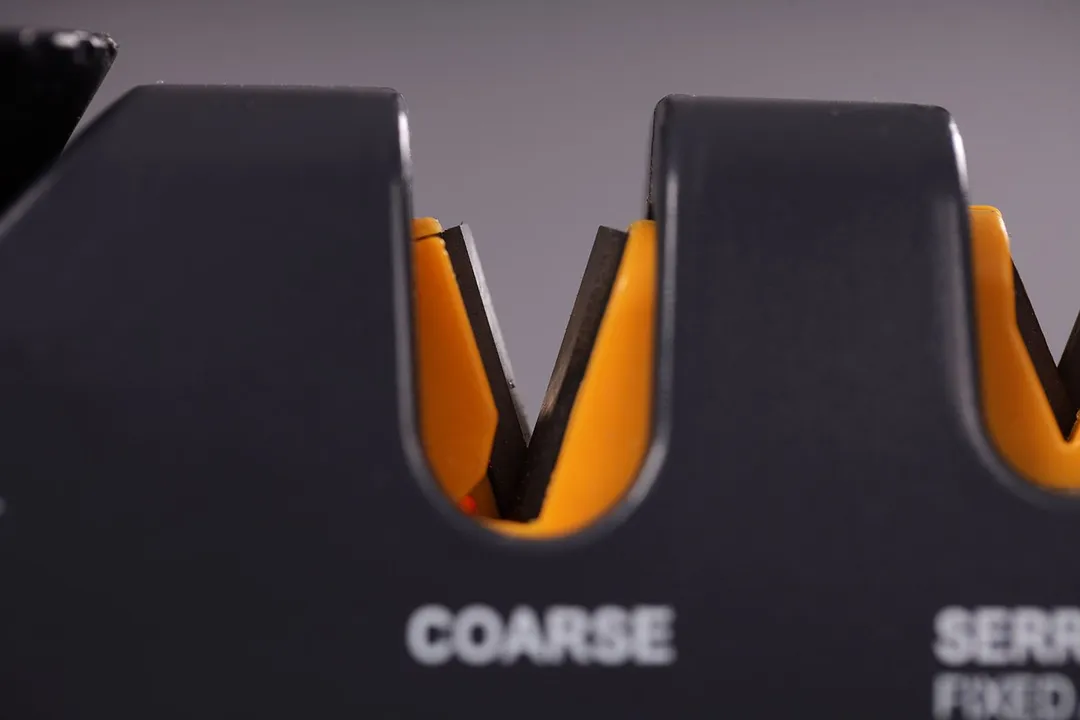
Pulling Through


Stability on Clean Surface
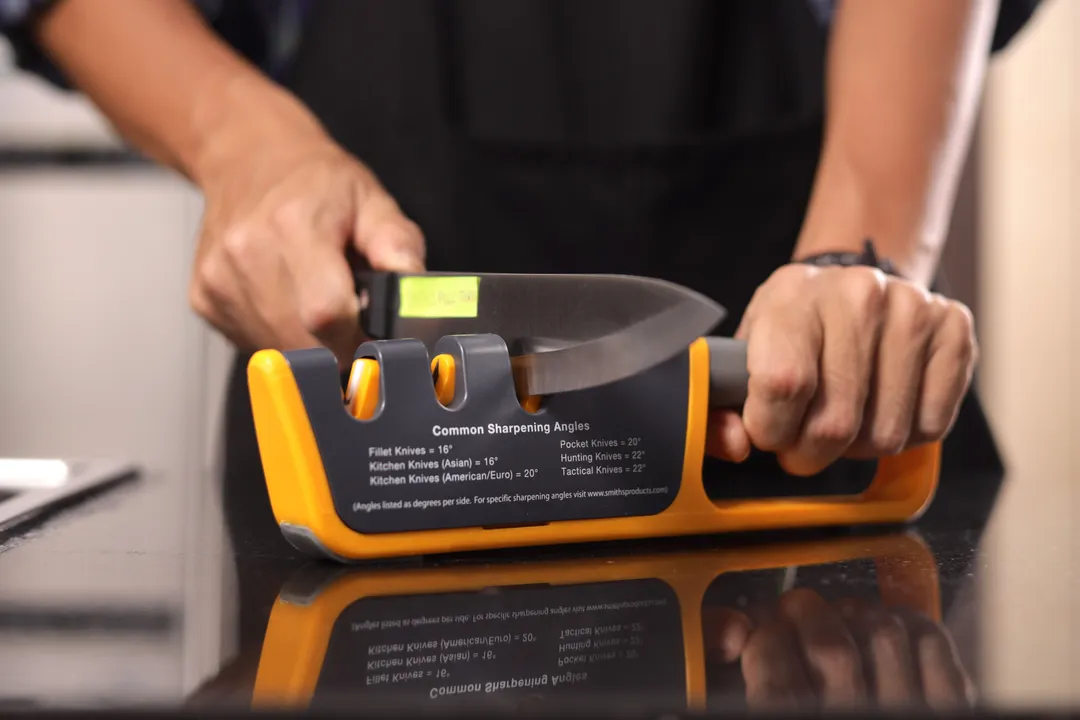
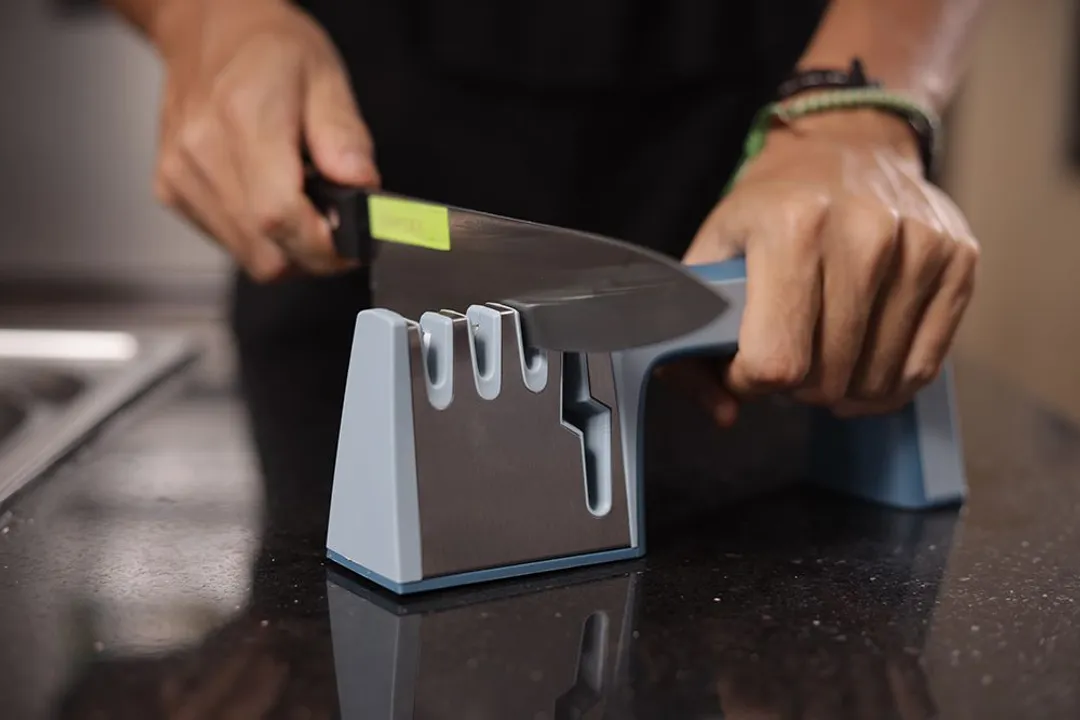
Stability on a Wet and Dirty Surface
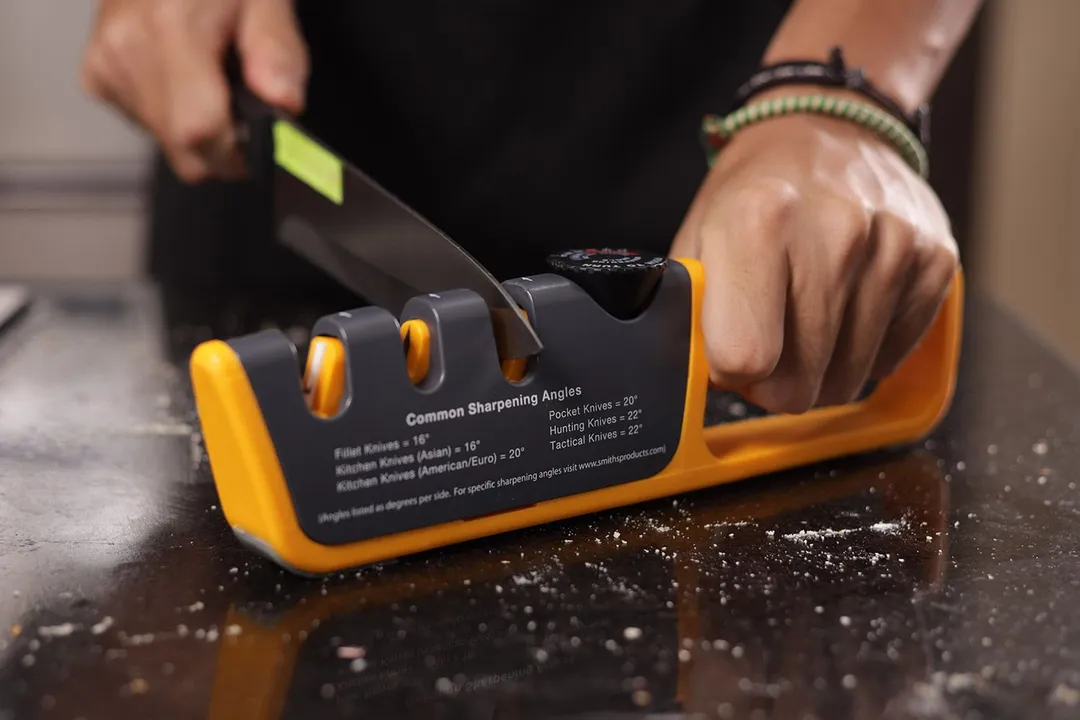
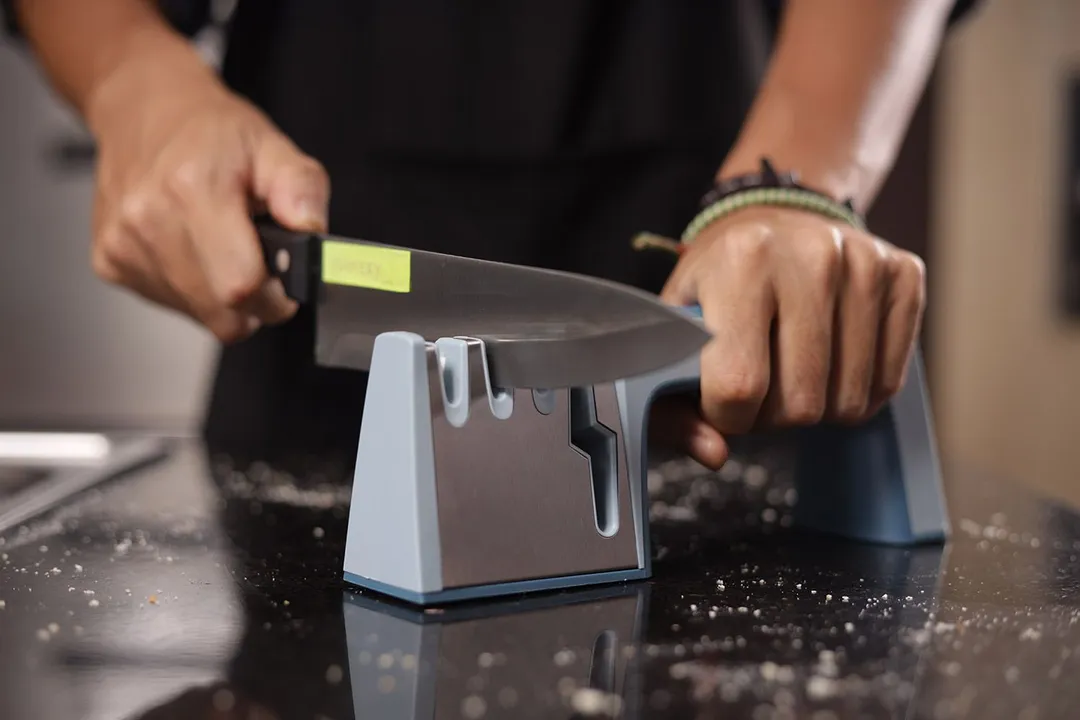
Behind the Comparison
Anh Ngo is a writer with 9 years experience at different media outlets, covering from public news and events to product testing and analysis. At HealthyKitchen101, she works across different departments, communicating closely with its network of writers, editors, and health, tech, and search engine experts to provide a meaningful and pleasant reading experience for visitors.
Lap is Head of the Research, Testing, and Review Team (RTR Team) at HealthyKitchen101.com, where he directs and supervises the testing of kitchen gadgets and appliances.
Nguyen Ntk is a graphic designer, photographer, and videographer whose philosophy centers around respecting and celebrating the beauty of reality. Through his lenses, Nguyen strives to capture the true essence of objects and events, showcasing and highlighting authentic features without distortion or exaggeration.



